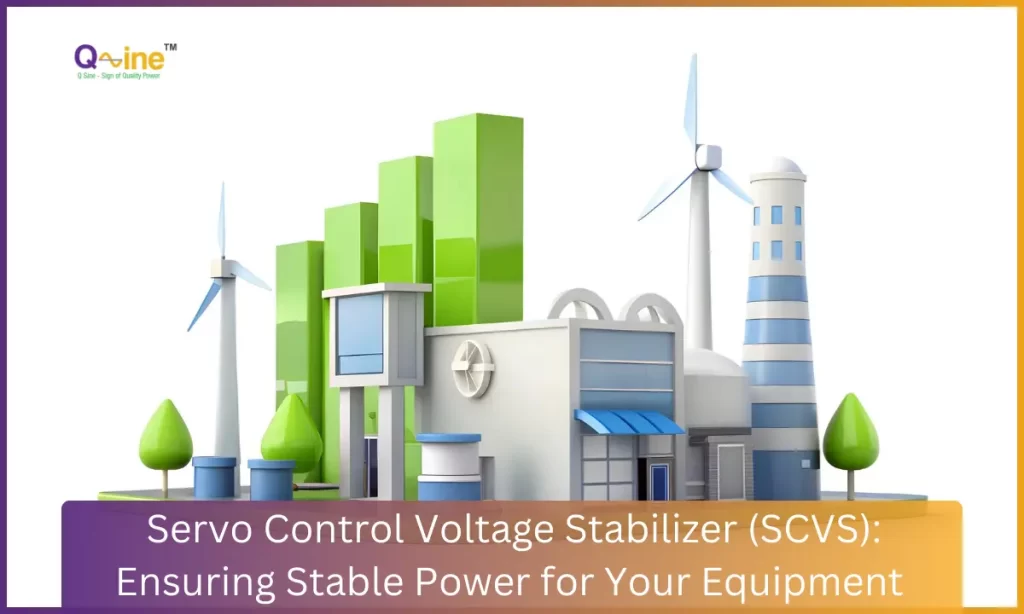In today’s world, where electrical equipment is integral to every industry, maintaining a stable voltage supply is crucial. Voltage fluctuations can damage sensitive machinery, cause system failures, and result in costly downtime. The Servo Control Voltage Stabilizer (SCVS), a reliable solution designed to regulate voltage and protect your valuable equipment from such risks.
In this blog, we’ll explore what a Servo Control Voltage Stabilizer is, its key features, benefits, applications, and tips on choosing the right one for your needs.
What is a Servo Control Voltage Stabilizer?
A Servo Control Voltage Stabilizer (SCVS) is a device that maintains a stable voltage output, regardless of fluctuations in the input voltage. It achieves this by using a servo motor, a microcontroller, and transformer to automatically adjust the voltage to the desired level.
Key Components:
- Servo Motor: The heart of the SCVS that adjusts the voltage by controlling the transformer.
- Microcontroller: The brain of the system, responsible for monitoring input voltage and controlling the servo motor.
- Buck/Boost & Variac Transformer: The component that steps up or steps down the voltage to maintain a consistent output.
Working Principle of Servo Control Voltage Stabilizer
When the input voltage fluctuates, the SCVS detects the change and adjusts the transformer voltage via the servo motor. This ensures that the output voltage remains within a specified range, protecting connected equipment from voltage spikes or drops.
Key Features of Servo Control Voltage Stabilizers
SCVS come with several advanced features that make them essential for various applications:
High Efficiency: SCVS units are highly efficient, with efficiency levels greater than 97.5%. This means minimal energy loss during voltage regulation, leading to cost savings.
Negligible Maintenance: These stabilizers are designed for long term use with minimal maintenance. Their robust design ensures a longer life, reducing the need for frequent servicing.
Wide Input Voltage Range: SCVS can handle a broad range of input voltages, making them suitable for environments with varying power supply levels. For example, ranges from 310 VAC to 480 VAC are available.
Protection Mechanisms: SCVS offers comprehensive protection, including:
Overload Protection: Prevents damage from excessive load.
Over/Under Voltage Protection: Safeguards equipment from dangerous voltage levels.
Frequency Cut Off Protection: Protects against frequency deviations.
Customizable Options: Depending on specific requirements, the output voltage and other settings can be customized. For instance, output voltage options of 415 VAC +/ 1% are available, with other variations as needed.
Benefits of Using Servo Control Voltage Stabilizers
Implementing a Servo Control Voltage Stabilizer in your electrical system offers several key benefits:
- Protection for Sensitive Equipment: SCVS provides a consistent voltage output, protecting sensitive equipment like computers, medical devices, and industrial machinery from damage caused by voltage fluctuations.
- Cost Savings: High efficiency translates into lower energy consumption, reducing electricity bills. Additionally, by preventing equipment damage, SCVS helps avoid repair and replacement costs.
- Enhanced Performance: Stable voltage ensures that your equipment operates optimally, reducing the risk of malfunction or downtime. This leads to increased productivity and reliability in your operations.
Applications of Servo Control Voltage Stabilizers
Servo Control Voltage Stabilizers are versatile and can be used across various industries:
Industrial Applications: SCVS is crucial in manufacturing plants, where stable voltage is necessary for heavy machinery and automation systems. It’s also used in data centers to protect servers and other critical IT infrastructure.
Commercial Applications: Office buildings, shopping centers, and hospitals rely on SCVS to ensure consistent power for their operations, from lighting systems to medical equipment.
Customized Solutions: For industries with unique voltage requirements, SCVS can be customized to meet specific needs, ensuring tailored protection and efficiency.
How to Choose the Right Servo Control Voltage Stabilizer?
When selecting a Servo Control Voltage Stabilizer, several factors should be considered:
Capacity Requirements: Determine the total load of your equipment to choose the appropriate SCVS capacity, ranging from 50 KVA to 2000 KVA.
Input Voltage Range Consideration: Evaluate the typical input voltage range in your area and select an SCVS that can accommodate those variations (e.g., 310V AC to 480V AC).
Additional Features: Look for essential features like digital control for precise voltage regulation, reset options (manual/auto), and cooling methods (oil-cooled) based on your specific needs.
Maintenance and Care for SCVS
While Servo Control Voltage Stabilizers are low maintenance, regular inspections and care can extend their life and ensure optimal performance:
Routine Inspections: Schedule regular inspections to check for any signs of wear of carbon brushes etc. or damage. This helps in identifying issues before they escalate.
Service and Support: Engage professional services for any repairs or maintenance. Regular servicing by experts ensures that your SCVS continues to perform efficiently.
Conclusion
A Servo Control Voltage Stabilizer is an invaluable investment for anyone looking to protect their equipment from the adverse effects of voltage fluctuations. With its advanced features, high efficiency, and broad range of applications, SCVS ensures that your operations run smoothly and cost-effectively.

